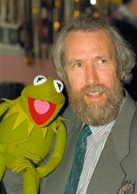CineSecrets.com


Star Wars memoirs
from someone who was actually there!
Nick Maley’s


One of the problems we had with the early evolution of the modern MFX Department was transcending from specialist makeup artists, (doing prosthetics), to multi faceted creature builders. You have to realize that at the time we did STAR WARS it was hard to find 10 people in Europe who specialized in that kind of work. In the US, of course, Dick Smith had built some mechanicals for THE EXORCIST assisted by Rick Baker and by the time that EMPIRE was being made, Rick and Stan Winston were separately experimenting with complex mechanical devices, but the craft that we now commonly refer to in movies as animatronics didn't exist, as such.
The birth of animatronics...
7/30/12
When I joined the business, in Europe, (and I suspect in the USA too), there were hard lines drawn by the unions that defined what tasks were assigned to each department. Under those agreements, the Props Dept. produced decaying skeletons, falling dummies, creatures with limited animation, and they usually operated puppets too. The Make-up Department created creatures based on people. The Special Effects Dept. made creatures that involved mechanisms. Stop motion models (animation) were either made by Special Effects or the animators themselves. When Stuart Freeborn and his team made the apes for 2001 A SPACE ODESSY he crossed the lines of demarkation by building suits on people that also included mechanical movement. I believe, in 1968, these were the first true animatronic suits, although Charlie Gamora had dabbled with that idea in the 30’s. By today’s standards the 2001 ape suits had limited movement. But at in 1968 they were totally amazing, cutting edge stuff. Producers are always eager to jump on something new, and instantly saw the possibility of escaping the Godzilla type men in suits recognizing the subtlety of movement that was so much more realistic than the cumbersome mechanical creatures so often produced by Special Effects Departments of the day. Basicaly it was time for the next step in the evolution process.
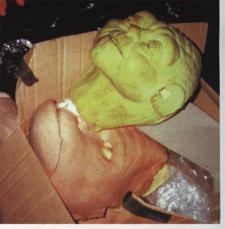
The Special Effects Department has always attracted engineers. With a few notable exceptions, engineers design creatures from an engineering stand point. They create things to withstand the maximum stresses that could be applied to them, using strong materials to build robust mechanisms based upon the same tried and tested mechanical principals that create cars and trains and cranes and robots, i.e., ball joints, swivels, hinges, pistons, etc. However, nature's creations don't use the same mechanical principals as cars and trains and cranes and robots. They don't move in a mechanical fashion. Their joints are less precise, their connections less rigid. Living creatures are not designed to withstand maximum stresses. Their existence is usually a delicate balance of strength and weight developed to suit specific circumstances. It was comparatively easy for us to accept the concept of building mechanisms that were balanced solely to the strength and limitations of the skins we used, (rather than building a sturdy mechanism and then looking for something to cover it with), since we were so used to dealing with the constant delicate balance of foam latex itself.
With the exception of the ill fated preying mantis creature on ANH, I believe that EMPIRE was the first project where the make-up crew were responsible for creating puppets. We only got away with it because we wouldn’t tell the Props and Special Effects guys how to make foam latex. Even then we were not, within the confines of the union agreements, allowed to operate the the puppets we were making. In a way it was strange. We were makeup artists doing stuff that didn't involve makeup and that didn't have people inside. We were really getting into an area that was new for us.
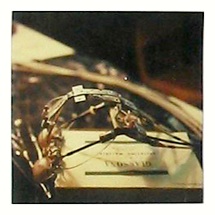
I remember the first time I heard the term “animatronics” used. It was a day when Bruce Sharman, the Line Producer on EMPIRE, came into the workshop. He talked to a bunch of us about the idea of creating a new union department called "Animatronics". It would be for specialists from assorted backgrounds who built our kind of creatures...... a mixture of animation, make-up effects and electronics. He was hoping to create a new department that would break the union boundaries that restricted us. But we weren’t very keen on the idea because we enjoyed being Make-up artists too. We didn't want to change Departments or be told that if we did animatronics we couldn't do prosthetics anymore. Nor did we want a new department that would exclude us from making animatronic creatures, when we had helped develop them.
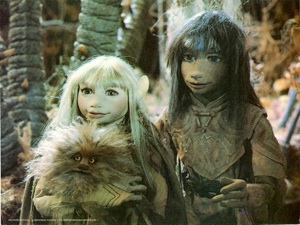
The political incorrectness of what we were doing in those early days resulted in confusing and incomplete screen credits that have since given rise to the propagation of a lot of misinformation. They couldn’t say we were building puppets so I am credited as one of the make-up artists although I did almost no make-up on EMPIRE. Wendy, who joined us from the Muppets, fabricated the Yoda’s sheet foam body and was one of the puppeteers. At the Muppets her title was Muppet Fabricator so that got adapted to “Yoda Fabricator” and her part in operating Yoda is unrecorded. David who was a trainee in our department ended up operating Yoda’s eyes. But trainees at that time didn’t get credits so he isn’t even credited as working on the movie! Since websites like StarWars.com are written by people who were not there, from an archive of info that mostly came from the credits and press releases, even they do not know the names of the 6 people who operated Yoda for the classic trilogy. This kind of confusion continued for almost a decade until it was accepted that making puppets and animatronics was acceptable for make-up artists.
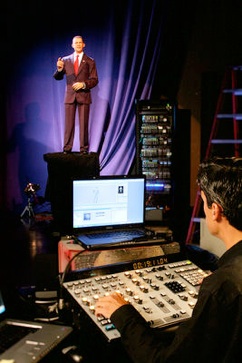
In the late 70’s and 80’s animatronic skills were developing along similar, but different, lines on both sides of the Atlantic. In the USA, Rick Baker and Stan Winston had established themselves as leaders in the field. Later two of Rick’s former crew members, Rob Botin and Chris Walas followed. Much of what they made was cable operated fully mechanical items using different heads to produce different facial expressions. In England we were building more puppets that included animatronic mechs. These and the suits we built were single items that produced multiple expressions. Stuart continued with the work started with 2001 A SPACE ODESSY where suits he built had no cables and were operated by the movements of the actors inside.
There's no doubt that, within Europe, the Henson Organization were hugely influential. Their workshop was in Hampstead on the outskirts of London and Jim’s mechanical designer, Lee, (who I am having trouble finding other reference to), was extremely innovative. His work inspired many of us to create mechanisms that derived their movements from unexpected parts of the operator’s body such as the back and shoulder blades..
